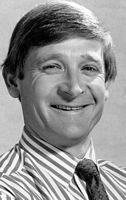


The development of microvascular surgery in Australia
Introduction
Participants
Beginnings
Developing links with academia and hospital medicine
A bevy of supporters
An ever-widening circle of contributors
Building research capacity
Nurturing relationships
Raising funds for research and development
The microsurgeon and the law
Winning community and corporate support
Leadership
The Institute and its style
Endnotes
Index
Search
Help
Contact us

Ralph Clark: In the early years, most of the cases occurred as “urgents”, and the anaesthetists on call at that time supplied the service. As more elective cases were done in daytime, a few sessional anaesthetists were allotted, but dropped out after a few years. Bill Stanisich[50] took a great interest in the program, and was the backbone of the service for many years. It was he who perfected the refinements of technique that helped to produce such excellent results. Unfortunately Bill was unable to come today.
Quite apart from that, one memory I have of Bernie O'Brien is during operations of any sort, for example, at the [St Vincent’s] private hospital where he had a private list and I was involved in giving anaesthetics. Come morning tea time and Bernie would come in and instead of having his cup of tea like the rest of us, he’d immediately go to the telephone with the back of an envelope with twenty things written on it –
Joan O'Brien: The green card! (laughter)
Ralph Clark: It might have been a green card sometimes, but it was usually the back of an envelope. He'd immediately go to the phone and start making phone calls until it was time for him to start the next case. I mean the rest of us would be sitting down having some biscuits and a cup of tea. That just shows this enthusiasm he had at all times.
Ann Westmore: Professor Jim Angus, the Dean of Medicine at the University of Melbourne, you would have known Bernard from your days at the Baker Institute?
James Angus: [51] Yes, thanks Ann. It's a great privilege to be today because this Institute has a soft spot in my heart. I spent 18 years doing full-time research at the Baker [Medical Research Institute] so, from one researcher to another researcher, and from one institute to another, there was a warm bond. But we obviously came from the other camp, at Monash [University], rather than [having] a Melbourne [University] affiliation.

James Angus collaborated closely with Institute scientists and later joined the Institute Board. Used with the permission of the Bernard O’Brien Institute of Microsurgery.
But there was one of these overseas Fellows [working with Bernard O'Brien] who had trouble with a flow meter. And they learnt that I was measuring blood flow in very small blood vessels at the Baker Institute, particularly in the small coronary arteries, and I also had been trained in Sydney on how to actually make the electromagnetic flow probe. So I came over here on regular occasions to help them with their equipment and Mrs Williams used to control whatever I did, because I was a foreigner.
Maris Williams: I wasn't all that bad! (laughter)
James Angus: This was in the very early '80s, and these Fellows they were fantastic. They were like Honours or PhD students and they respected what we had to say. The other plus I had, being a pharmacologist, was that I was very interested in blood vessel spasm. Coronary artery spasm and variant angina was what I was working on at the Baker. And of course when surgeons raised the skin flaps the vessels went into spasm. And so, could there be a pharmacological treatment that they could just drip on the vessel and the spasm would disappear? So we went through the pharmacopoeia with calcium entry blockers, glyceryl trinitrite, local anaesthetics, alpha blockers, thromboxane inhibitors and then of course prostaclyclin, which you had to make very quickly. And so we wrote a number of papers with these Fellows.[52]
 |
Witness to the History of Australian Medicine |  |
© The University of Melbourne 2005-16
Published by eScholarship Research Centre, using the Web Academic Resource Publisher
http://witness.esrc.unimelb.edu.au/052.html